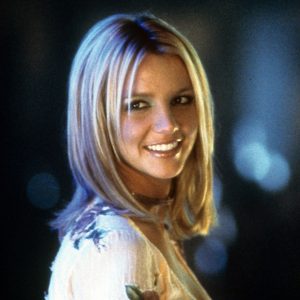Understanding Tick-Borne Encephalitis (TBE)
Tick-borne encephalitis (TBE) is a viral infection that affects the central nervous system, leading to inflammation of the brain. It is primarily transmitted through the bite of an infected tick, which acts as a vector for the virus. TBE is also known to be transmitted through the consumption of unpasteurized dairy products from infected animals, such as goats, sheep, or cows. The virus is endemic in certain parts of the world, particularly in Europe, China, and Japan, where the climate and geography provide an ideal environment for the ticks that carry the virus to thrive.
Historically, TBE has been a concern for travelers visiting these endemic regions. However, a recent case of TBE in the UK, which was locally acquired, has raised alarms among health authorities. This case highlights the potential spread of the virus beyond its traditional geographic boundaries, possibly due to climate change or other environmental factors that may be altering the habitats of ticks. As a result, understanding TBE is becoming increasingly important, not just for travelers but also for residents in regions where the virus may be emerging.
Global Distribution and Risk Areas
TBE is most commonly found in temperate regions of Europe, including countries such as Russia, Germany, Austria, Switzerland, and the Baltic states. It is also prevalent in parts of China and Japan. The virus is typically found in areas with dense forests and grasslands, where the ticks that carry the virus are most active. In these regions, TBE is a well-known public health concern, and preventive measures, such as vaccination, are commonly recommended for individuals who spend time outdoors, especially in areas where the virus is known to circulate.
The recent emergence of a TBE case in the UK, where the virus is not traditionally endemic, has significant implications. This case suggests that the geographic range of TBE may be expanding, possibly due to changes in climate that are allowing tick populations to move into new areas. This expansion is a concern for public health officials, as it may indicate that other regions could also be at risk. Travelers to endemic areas should remain vigilant and take necessary precautions to protect themselves from tick bites, but now residents in non-endemic areas must also be aware of the potential risks.
Transmission and Risk Factors
TBE is primarily transmitted through the bite of an infected tick. Ticks become infected with the virus when they feed on the blood of infected animals, such as rodents or other small mammals. Once a tick is infected, it can transmit the virus to humans or other animals through its saliva during the feeding process. The risk of transmission increases the longer the tick remains attached to the host, as the virus needs time to migrate from the tick’s midgut into its saliva.
Other, less common modes of transmission include consuming unpasteurized dairy products from infected animals. This mode of transmission is more prevalent in certain cultural or regional contexts where unpasteurized dairy is commonly consumed. The risk of TBE is higher for individuals who engage in outdoor activities such as hiking, camping, or farming, as these activities increase the likelihood of encountering ticks in their natural habitats.
Symptoms and Health Implications
The symptoms of TBE can vary in severity and are typically divided into two phases. The first phase, which occurs within a week or two of the tick bite, is characterized by non-specific flu-like symptoms, such as fever, headache, fatigue, and muscle pain. In many cases, individuals may not seek medical attention during this phase, as the symptoms can be mistaken for a common viral infection.
In severe cases, the virus can progress to the second phase, which involves neurological symptoms such as meningitis (inflammation of the membranes surrounding the brain and spinal cord), encephalitis (inflammation of the brain), or myelitis (inflammation of the spinal cord). These symptoms can appear several days to a week after the initial phase and can be severe, leading to complications such as paralysis, cognitive impairment, or even death. The long-term health implications of TBE can be significant, with some individuals experiencing persistent neurological symptoms or other health issues months or even years after the initial infection.
Prevention and Protection Strategies
Preventing TBE requires a combination of strategies aimed at reducing the risk of tick bites and avoiding other potential modes of transmission. One of the most effective ways to protect against TBE is through vaccination. Vaccines are available in many countries where TBE is endemic and are recommended for individuals who are at high risk of exposure, such as those who work outdoors or engage in frequent outdoor activities in areas where the virus is present.
In addition to vaccination, personal protective measures can significantly reduce the risk of tick bites. These include wearing protective clothing such as long sleeves and long pants when walking in wooded or grassy areas, using insect repellents that contain DEET or other effective ingredients, and conducting regular tick checks after spending time outdoors. Removing any attached ticks promptly and correctly is also crucial, as the risk of transmission increases the longer the tick remains attached.
Avoiding unpasteurized dairy products from regions where TBE is present can also help reduce the risk of infection. This is particularly important for individuals traveling to or residing in areas where the consumption of unpasteurized dairy is common.
The Recent UK Case and Its Implications
The recent case of TBE in the UK, where the virus was locally acquired, is a significant public health event. This case highlights the potential for TBE to emerge in regions where it was previously not considered a threat. The UK case likely resulted from the presence of infected ticks in the area, although the exact source of the infection is still under investigation. This case underscores the need for increased awareness and vigilance among both healthcare providers and the general public.
The implications of this case are far-reaching. For health authorities, it necessitates a re-evaluation of the potential risks of TBE in the UK and the implementation of appropriate public health measures. This could include increased surveillance for tick-borne illnesses, public education campaigns to raise awareness of the risks and preventive measures, and the consideration of vaccination strategies for individuals at high risk.
For the general public, this case serves as a reminder of the importance of being aware of the risks associated with tick bites, not just when traveling to endemic areas but also when engaging in outdoor activities closer to home. By taking proactive steps to protect themselves from tick bites and staying informed about the potential risks, individuals can reduce their likelihood of contracting TBE and other tick-borne illnesses.
In conclusion, the emergence of TBE in the UK is a significant public health concern that highlights the potential for this virus to expand its geographic range. By understanding the causes, transmission, symptoms, and prevention strategies for TBE, individuals can better protect themselves and their communities from this serious infection.












